A Historic Overlay District won’t stop renovations in Holmes Run Acres
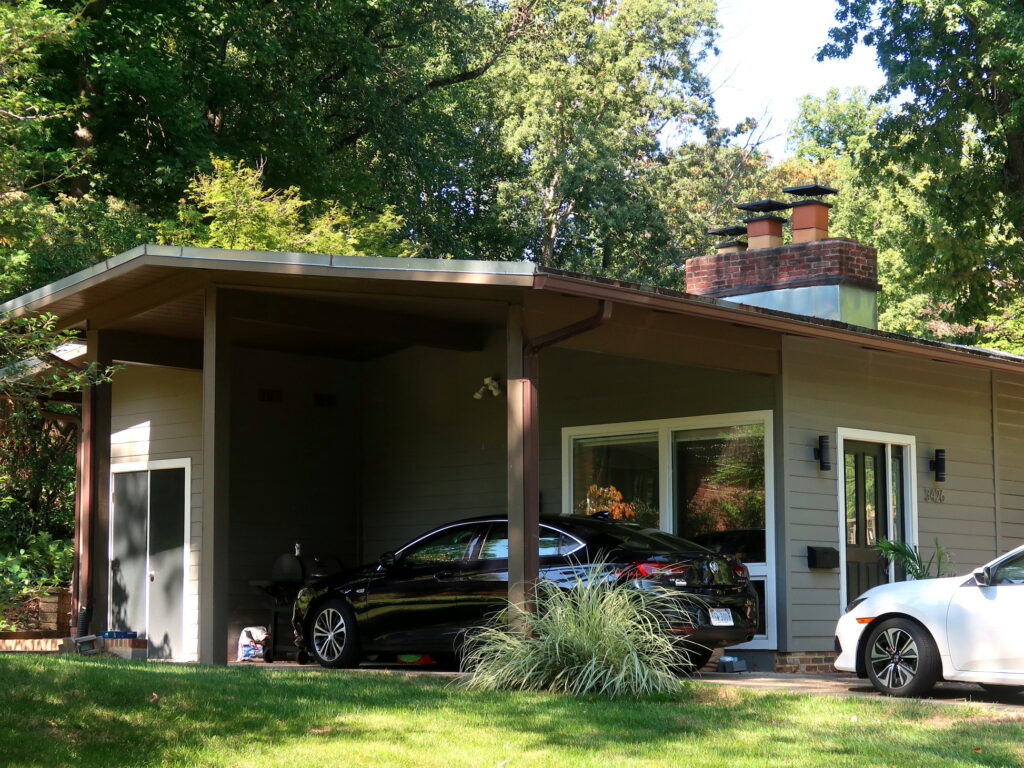
If a Historic Overlay District is created in Holmes Run Acres, homeowners interested in remodeling could still do so – without violating the terms of the HOD designation.
Holmes Run Acres (HRA) is a neighborhood full of mid-century modern homes characterized by lots of wood and glass. It’s located off Gallows Road in Mason District just inside the beltway.
Related story: Historic Overlay District proposed for Holmes Run Acres
The HOD proposal has sharply divided residents, with some homeowners arguing an HOD would drive up remodeling costs, while others say the designation is important to protect the character of the neighborhood and prevent out-of-place mcmansions.

Nearly all of the HRA homes have been modified to some extent. A tour of the neighborhood shows many of the renovations already undertaken would still be approved if they were proposed after an HOD is established.
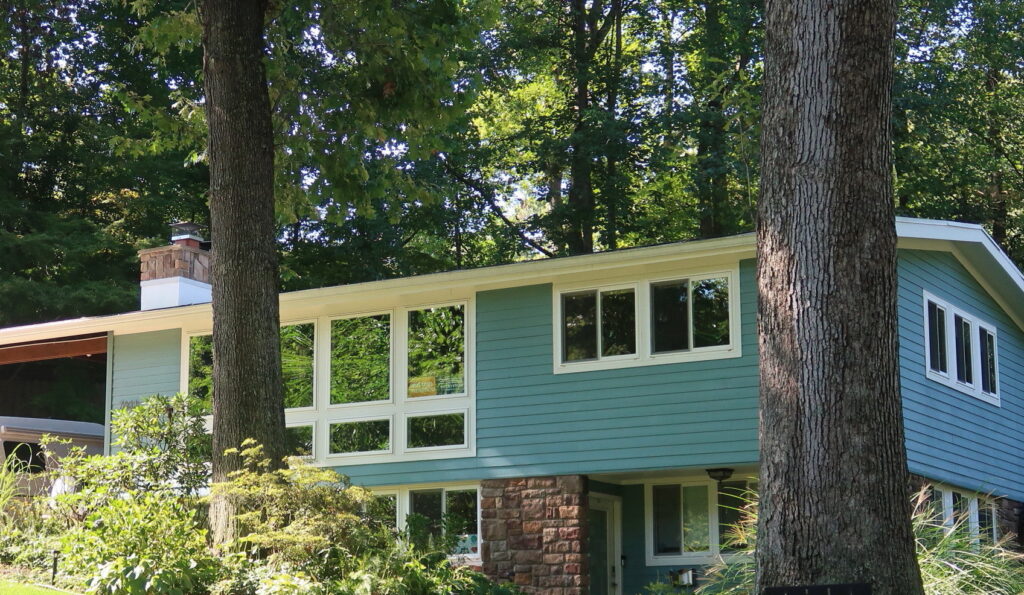
County staff determined that just 58 homes – out of approximately 355 – are “non-contributing” to the HOD, meaning some aspects of the design would not add to the historic significance of the proposed HOD.
The results of a survey of residents on whether they want an HOD or not are expected to be announced in October.
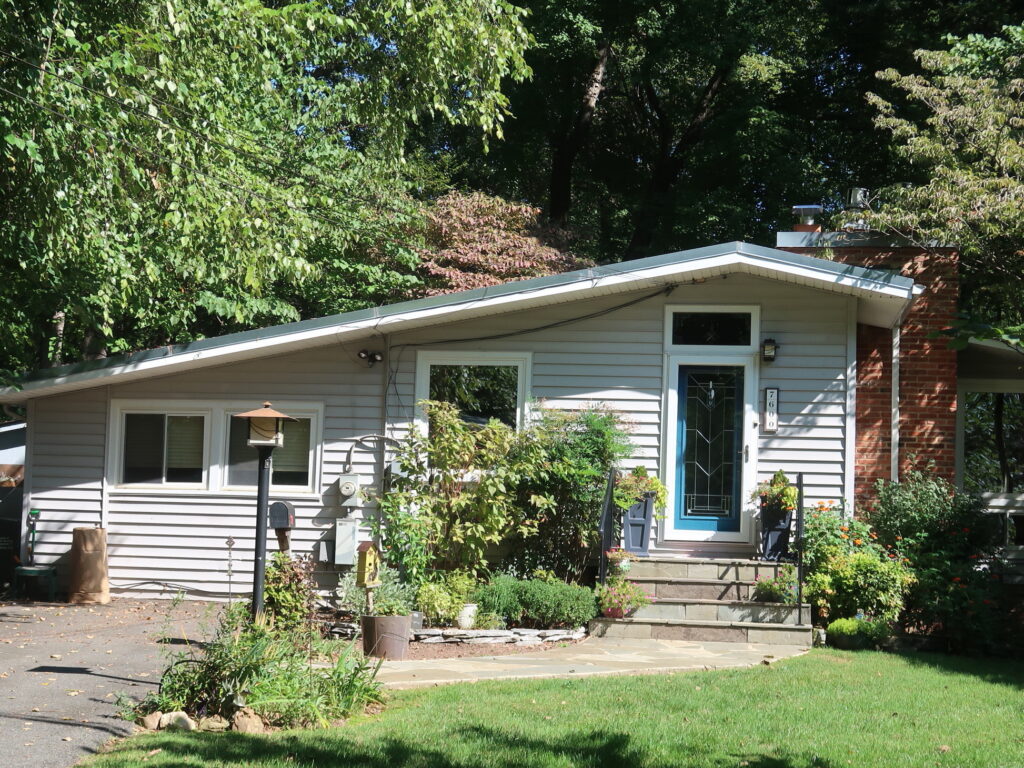
The Fairfax County Planning Department is working on a Comprehensive Plan Amendment specifying how an HOD would work in Holmes Run Acres. The staff report is expected to be issued in early 2023. The Board of Supervisors would ultimately decide if an HOD should be established.
Related story: Let’s preserve the unique character of Holmes Run Acres
If an HOD is created, homeowners who want to renovate or expand a house would be required to submit their plans to an Architectural Review Board. The ARB could suggest revisions to ensure it complies with the HOD. If the plan is rejected, homeowners could appeal. That process could add to the cost of remodeling.
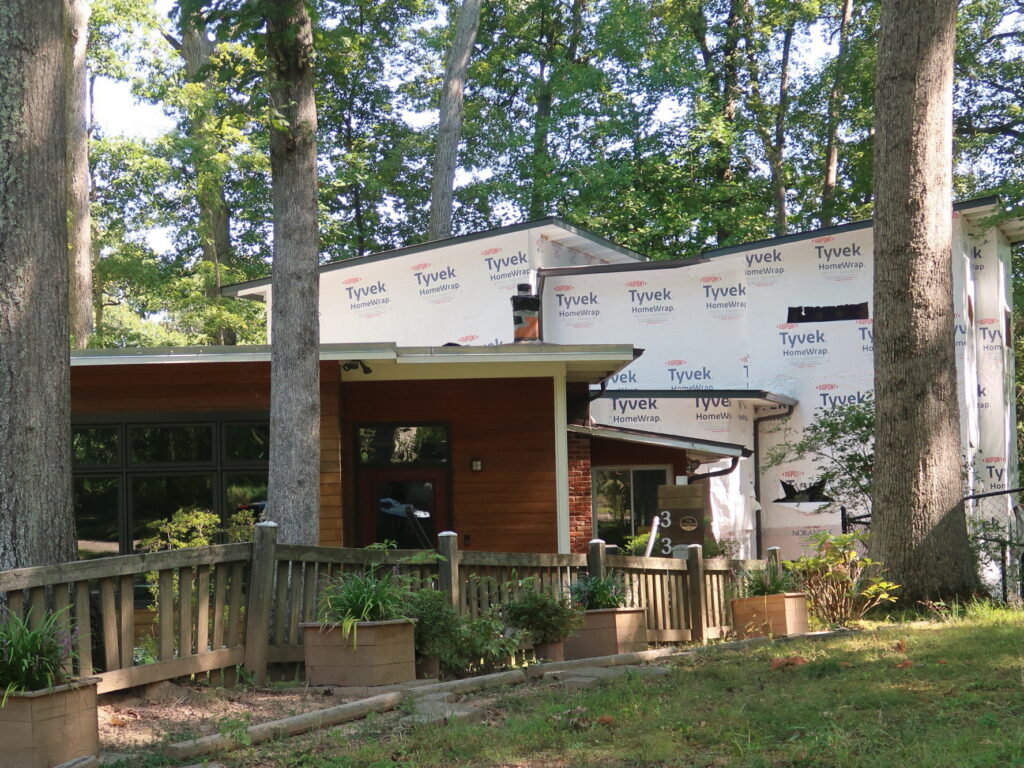
The original houses in HRA, built over several years in the 1950s, had large windows, post-and-beam construction, no ornamentation. low sloped roofs with wide overhangs, prominent chimneys, open floor plans, and carports with thin columns.

The key element of the community’s design is its relationship to nature. Trees were preserved to the extent possible, and the homes were sited on lots to fit in with the natural topography and provide maximum privacy.
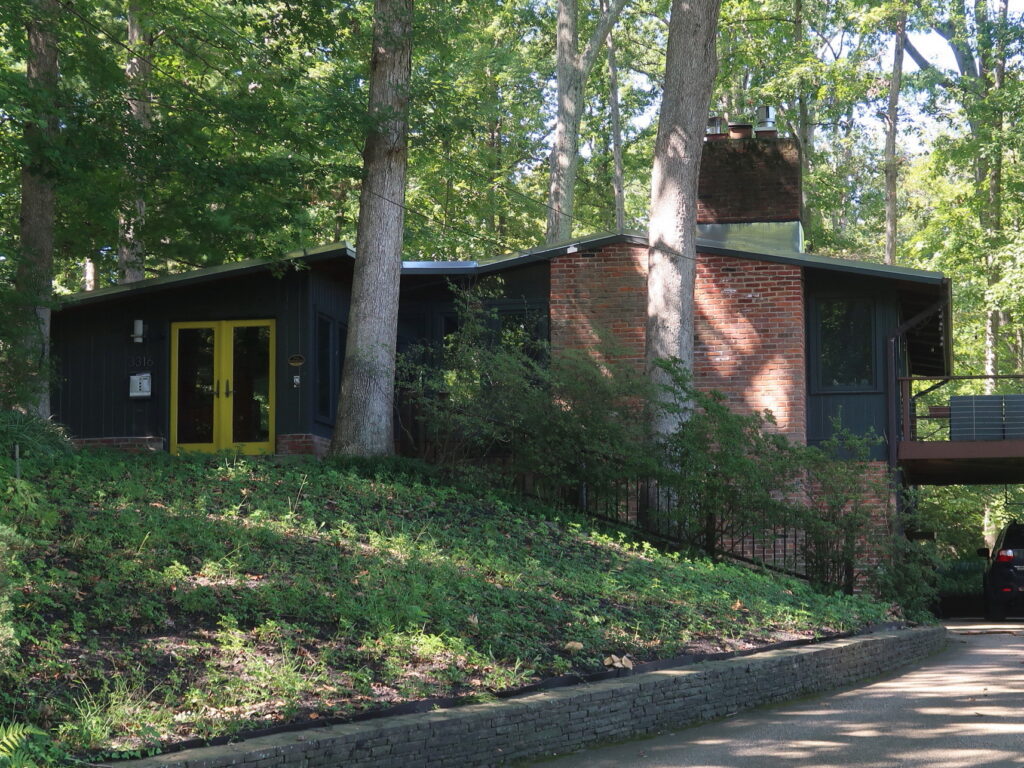
The ARB would only consider exterior renovations visible from the street. Interior renovations or exterior projects in the rear of the house hidden from view would not be affected.
The ARB would not require homeowners to use original materials from the 1950s or follow strict guidelines on paint color.
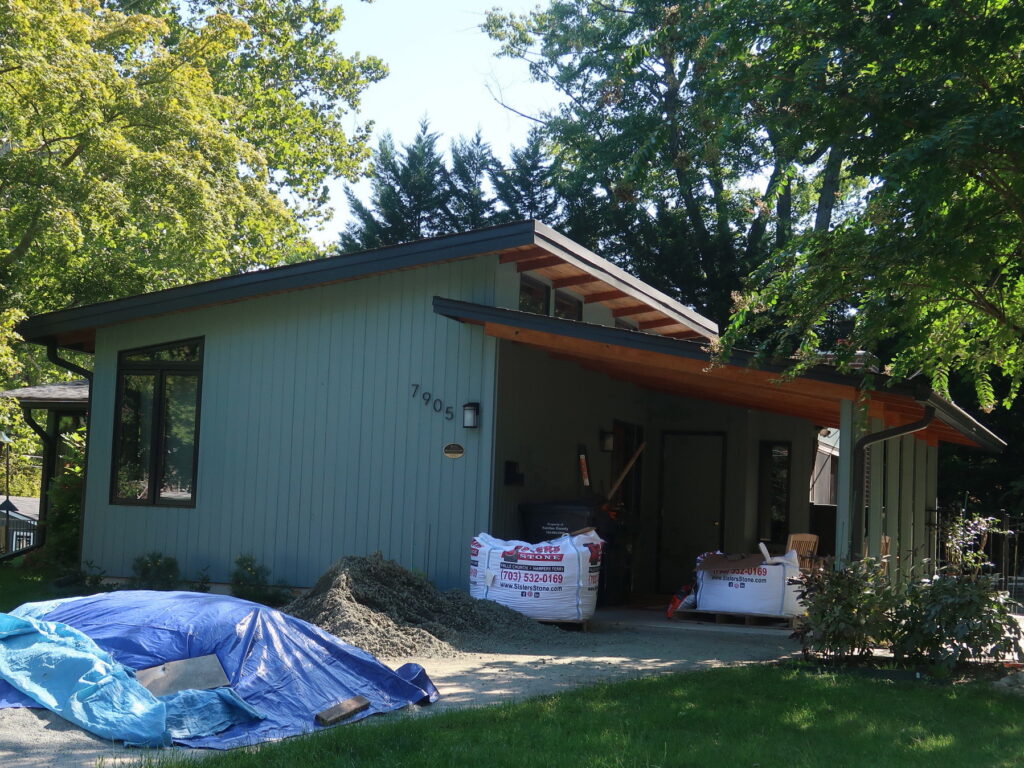
There are some homes in the neighborhood that were doubled in size that are still considered “contributing” to the character of the neighborhood because they incorporated elements from the original design.
The homes were actually designed with the idea that they would be expanded, architect Francis Lethbridge stated in a 1987 interview.


Good article.
The character of the neighborhood doesn’t matter as much as the division of its neighbors.
Mortgage rates are over 7% and inflation is soaring, so mcmansion demand is down.
Let’s hit the pause button on HOD.
Neighborhood character, of which was not a requirement when many homeowners purchased their land, shouldn’t infringe on owners rights
The unnamed Author has not been watching the HOD process unfold in Hollin Hills.
A recent request to permit an addition was denied because it covered “character defining features” of the original home.
The response from the homeowner and architect was “this has been done before in the neighborhood, and is consistent with the internal Design Review process we’ve had for 70 years.”
The response from the ARB was “that’s why we are here now, to stop such additions to protect the character defining features of the neighborhood.”
The homeowners now have to return to the drawing board and try again.
The author’s assertion that what has been done before would be allowed again is based on a mis-understanding of the HOD.
In Hollin Hills, relevant additions must pass both the Hollin Hills Design Review Committee (DRC) and the Fairfax County Architectural Review Board (ARB). The DRC and ARB serve different purposes.
“this has been done before in the neighborhood, and is consistent with the internal Design Review process we’ve had for 70 years.” How can a contemporary project be “consistent” with an evolving 70 year old review process? While Hollin Hills has always had a Design Review Committee, the committee’s membership and its criteria have changed over time. Who is to say whether the current DRC would approve of all past DRC decisions?
Every home is unique! Congratulations to Hollin Hills for recognizing that their architectural heritage is worth preserving!
Let me simplify this a bit.
In Hollin Hills, as in HRA, the chimney (all the bricks making up the chimney stack) is considered a Character Defining Feature (CDF).
For 70 years, homeowners in Hollin Hills have been “bumping out” their houses beyond the chimney, much like HRA homeowners have done with Gaddy models to expand the living and dining rooms. These additions have never been controversial.
Because the chimney is now a CDF, covering it or hiding it with new construction is now a big no-no. The homeowner on Beachwood tried to build an addition that covered the chimney, was consistent with many other additions in the neighborhood, passed their internal design review committee, and then was not permitted by the ARB.
The ARB justified their decision by asserting that prior additions that hid the chimney were damaging the historic character of the neighborhood – and now they were the new sheriff in town hired to prevent those sorts of additions in the future.
What was commonplace and non-controversial – is now forbidden.
“A tour of the neighborhood shows many of the renovations already undertaken would still be approved if they were proposed after an HOD is established.”
Yeah – don’t trust this blanket statement – there is no way anyone could possible know this statement to be true. It’s simply up to the Architectural Review Board members at the time the design is presented. However, what we do know about the current Review Board is that they denied Hollin Hills permits that were very “in character” and resembled alterations that were already common in the neighborhood. So, if anything, there is evidence to the contrary.
Look at example property 7204 Beechwood Road, the permit for which was denied in July. Here is an image of the proposed addition that was denied (dark grey): https://imgur.com/a/VjHjs7H . They even said in the meeting that common additions that already exist in the neighborhood are not precedent for approval. Can’t spin the actual actions of the Architectural Review Board.
Common facts:
1. Nearly every Holmes Run Acres (HRA) home has an addition.
2. Only 58 HRA homes were found to be non-contributing out of about 355.
3. The ARB has approved residential additions.
Certainly one can conclude that at least some of the earlier HRA additions would be approved.
In your example property 7204 Beechwood Road, the proposed modifications were NOT “in character” with the original home.
Ironically given your statements, I would argue that YOU can spin the actual actions of the ARB!!!
Have you watched an ARB meeting?
The homeowner of 7204 Beechwood is a practicing architect and the designer of the addition is a practicing architect. Both tried to meet the expectations of the Hollin Hills Design Review Committee – and did so successfully. They were then shot down by the ARB.
All of this is subjective. Your opinion that the addition was not in character with the original home is just that – your opinion. At least two other practicing architects disagree with you and one of them is the homeowner.
Of course my opinion is my opinion. 🙂
Of course the homeowner and the designer of the addition thought their design was satisfactory. 🙂
1. And? That was before a potential HOD existed. The issue is reasonable new additions are getting denied by the ARB. One point of concern in particular of concern is the board’s high regard for “character defining features” and aversion to their concealment. There are many of them defined in the current guidelines. Based on your general comments I can tell you aren’t familiar.
2. Right, this is a substantially higher % than Hollin Hills. All of those homes would be subject to ARB review going forward.
3. I agree with this, I think it’s reasonable to conclude that some of the earlier additions would be approved. The problem is lack of specificity from the county. The vast majority of non conforming homes had absolutely zero explanation as to why.
Finally, re: 7204 Beechwood Road literally what are you smoking? The lines are consistent, the window dimensions are identical, the materials & color match, and that particular addition is already common in the neighborhood. On top of that the Design Review Board comprised of Hollin Hills residents approved it and the ARB did not.
Ganja bro!!!!!
The proposed addition to 7204 Beechwood Rd intended to make the originally 1-story Goodman model look like a 2-story Goodman model (false historicism?). The addition was NOT deferential to the original home. The addition was NOT in keeping with the home’s original character. You don’t have to take it from me; the design was not approved by the ARB.
Approval by the Design Review Committee (not BOARD) does not imply approval by the ARB. The DRC and ARB are separate entities with different guiding principles.
Anyway the updated 7204 Beechwood Rd proposal is way cooler; all’s well that ends well!
I have to commend you for actually understanding this as a historical preservation board operating based on the DOI standards (not required by VA law), and will therefore enforce things like “False Historicism” and the obfuscation of character defining features. I also commend your understanding that the ARB is not the community, and, unlike an HOA & evidenced by Hollin Hills, the opinions of the community will not be considered in their process.
Now – just so you have context – this is very different in practice from what was sold to the neighborhood by the county and some of the neighborhood pro voices when the exploratory study was commissioned which was: The HOD is a massing & style protection against mcmansions.
You’re free to think what you want, but this difference is why residents are now by far and large confused, worried, and against it.
Everyone is free to think!
How can a Historic Overlay District (HOD) be “sold”? <– Rhetorical device
This is the third Annandale Today article about the HRA HOD. There have been many comments airing personal opinions regarding the definition and purpose of a HOD. A Fairfax County HOD is clearly defined in the Fairfax County Zoning Ordinance (see Section 3101).
In brief:
1. A HOD is a zoning tool defined by the Fairfax County Zoning Ordinance and administered by the Department of Planning and Development and the Architectural Review Board (so empowered by the zoning ordinance).
2. The ARB applies community specific guidelines as well as architectural and preservation best practices to influence the massing and style of future, relevant permitted construction.
A la Bugs Bunny . . . that's all folks!
While all of this zoning law may be clear to you it was never made clear to the neighborhood as a whole. The Chair of the Friends of HRA led the advocacy (selling) effort for the HOD and explained the process as part of a long email to our listserv:
“6) Part of the study includes vetting that our neighborhood is worthy of an HOD. Part of the study includes a number of meetings with a team comprised of county staff and a group of HRA residents with varying expertise, in order to come up with the eventual guidelines.
7) If these community-specific guidelines are adopted by the community, then an HOD is designated. If they are not adopted or cannot be agreed upon, then no HOD designation is given.”
#6 happened exactly as described. #7 has not and will not happen. There is no statutory requirement for the community to approve the guidelines. The neighborhood only gets a non-binding vote on a draft set of guidelines. The ARB/County controls adoption of the final guidelines. #7 above is patently false.
The Chair of the Friends of HRA, a practicing architect with HOD experience, would certainly have been familiar with HOD Design Guidelines and Section 3101 of the Zoning Ordinance. Yes? Why then were we misled by the text in #7?
I am that, “Chair of the Friends of HRA, a practicing architect, with HOD experience”. I brought the HOD to the attention of the community as a way to stave off adverse development in our historic neighborhood. Tear-downs and McMansions were a hot topic in 2019 and creating a lot of anxiety among our residents. A HOD was proposed to me as a way to counter those McMansions, understood as development. Whatever I learned, I posted to the neighborhood website. The neighborhood was never misled. Further, I have sought to keep my posts neutral and informative. I even shared, early on, that I was initially unsure of an HOD for HRA but came around to realizing that it was a relatively small give for the hope of retaining our character (this, after exhausting other measures with FoHRA).
I am not a lawyer and don’t pretend to know the law. But I have some familiarity with the Comprehensive Plan, Site Specific Plan Amendments, with Zoning, etc. I stand by an HOD as a means to keep our trees, our modest homes, our MCM character, for future generations to enjoy. I don’t know a neighborhood that has survived intact without guidelines such as an HOD or covenants or what have you. At the same time, I have seen neighborhoods remain largely intact with an HOD. HRA has endured 70 years. But the status quo has changed; development pressures have changed.
The HRA HOD process has been fraught. The timing for its roll-out has been unprecedented in change (a pandemic, 3 Supervisors, a redistricting). The Guidelines aren’t as clear as we’d like. For all these reasons, the Work Group and the HRA Civic Association requested a county-administered poll about the HOD. Not everyone in the neighborhood understands Holmes Run Acres’ significance, and perhaps some don’t care enough about it to go through the added layer of an ARB review should they apply for a building permit.
Poster, “The neighborhood was misled”, you must forget that I am your neighbor. Why would I take the effort to propose something to the neighborhood that is a detriment to us? You don’t wish for an HOD. I understand and respect your position. But I wish the accusations would stop.
Thank you.
Is quoting you directly (“If these community-specific guidelines are adopted by the community…”) considered accusatory these days? It’s so hard to keep up with Internet etiquette…
To clarify, internet etiquette demands that named commenters should only be addressed by anonymous, sarcastic responders. (I know, I know the irony!)
I trusted the experts and voted for an HOD study based on the “exit ramp” described in #7. Many folks in the neighborhood did the same.
Now I’m seeing answers here that are telling us we should have read all the zoning law ourselves back in 2019 and become experts before voting for the study.
So essentially, we’re all suckers for trusting the experts.
What a winning strategy for building trust with your neighbors.
“I trusted the experts and voted for an HOD study based on the “exit ramp” described in #7. Many folks in the neighborhood did the same.”
Fair enough . . .
“Now I’m seeing answers here that are telling us we should have read all the zoning law ourselves back in 2019 and become experts before voting for the study.”
Not quite, but close enough . . .
“So essentially, we’re all suckers for trusting the experts.”
You fell off the rails; this statement does not follow from the previous two.
Allow me to advance a more cogent hypothesis for #7. Your neighborhood expert expressed their understanding of an incompletely defined HOD establishment process. To emphasize, the “law” (read zoning ordinance) does not dictate how the required HOD documents are generated.
No strategy required. Trolls live alone under bridges eating scraps, entertaining themselves reading the Fairfax Zoning ordinance as well as Annandale Today.
“While all of this zoning law may be clear to you it was never made clear to the neighborhood as a whole. The Chair of the Friends of HRA led the advocacy (selling) effort for the HOD and explained the process as part of a long email to our listserv”
While the Fairfax County zoning ordinance defines a HOD and describes the documents required to establish a HOD (see 3101.3.B), the zoning ordinance does not prescribe a document creation process. Knowing the definition of a HOD does not imply knowledge regarding how these documents (3101.B.3) are generated!
Read the Fairfax County zoning ordinance, specifically section 3101. Everyone has the responsibility to think for themselves!!
I do not live in Holmes Run Acres, but would sure love protection from unscrupulous developers and residents building absurd mcmansions.
@Dawna
there are no unscrupulous developers lurking in HRA.
there have been 2 – count ’em – two (2) tear-downs in HRA from 2015 to date rebuilt with large homes not of a Luria, Gaddy, or Bodor floorplan.
you should steer clear of the kool-aid that’s being passed out in this ‘hood – it leaves a bad taste in ones mouth.
@Wanna
“there have been 2 – count ’em – two (2) tear-downs in HRA from 2015 to date rebuilt with large homes not of a Luria, Gaddy, or Bodor floorplan.”
Based on the available pictures in this article and the 58 non-contributing homes, it is obvious that many more than 2 HRA homes have had their MCM character significantly obscured by unsympathetic modifications.
I will forgo even a taste of your narrow-sighted, fact cherry-picking.
Developers have never built a McMansion in HRA. Two homeowners replaced their MCM homes with custom homes. They were ostracized from the neighborhood.
Developers have thoughtfully flipped numerous homes in HRA.
The HOD is a solution in search of a problem that does not exist in HRA.
I prioritize people over structures, and it makes me sad to know our neighbors were judged so harshly for their personal design choices.
“Two homeowners replaced their MCM homes with custom homes.”
Based on the available pictures in this article and the 58 non-contributing homes, it is obvious that many more than 2 HRA homes have had their MCM character significantly obscured by unsympathetic modifications.
“I prioritize people over structures, and it makes me sad to know our neighbors were judged so harshly for their personal design choices.”
Talk is cheap (especially in the comment section of an Annandale Today anonymous article).
Have you reached out to the 2 homeowners you mentioned and expressed your sympathy? Have you attempted to be their bridge to the neighborhood?
Alternatively, is it possible that the HRA community is in no small part the consequence of the architecture? If so, protecting the architecture is a community reinforcing act.